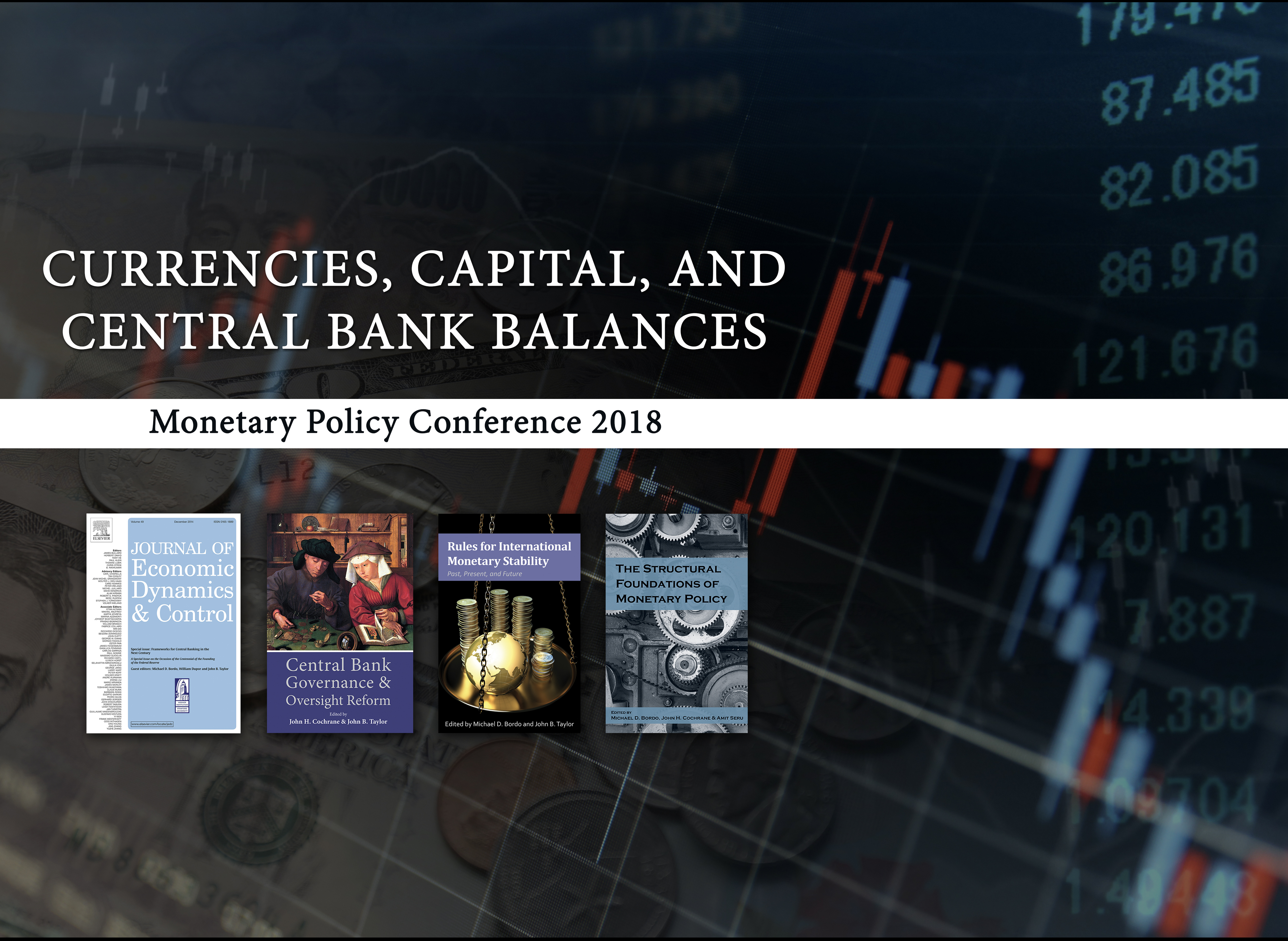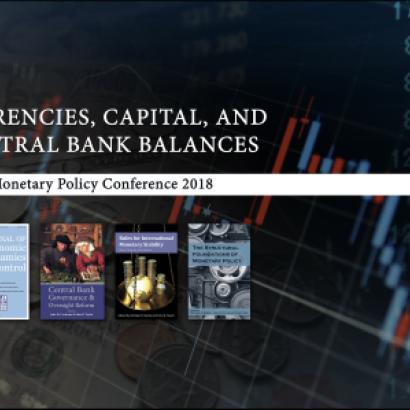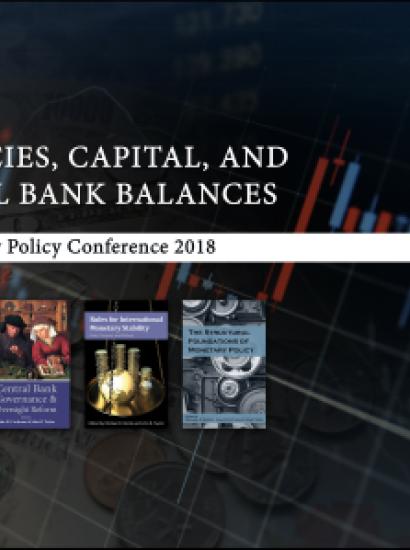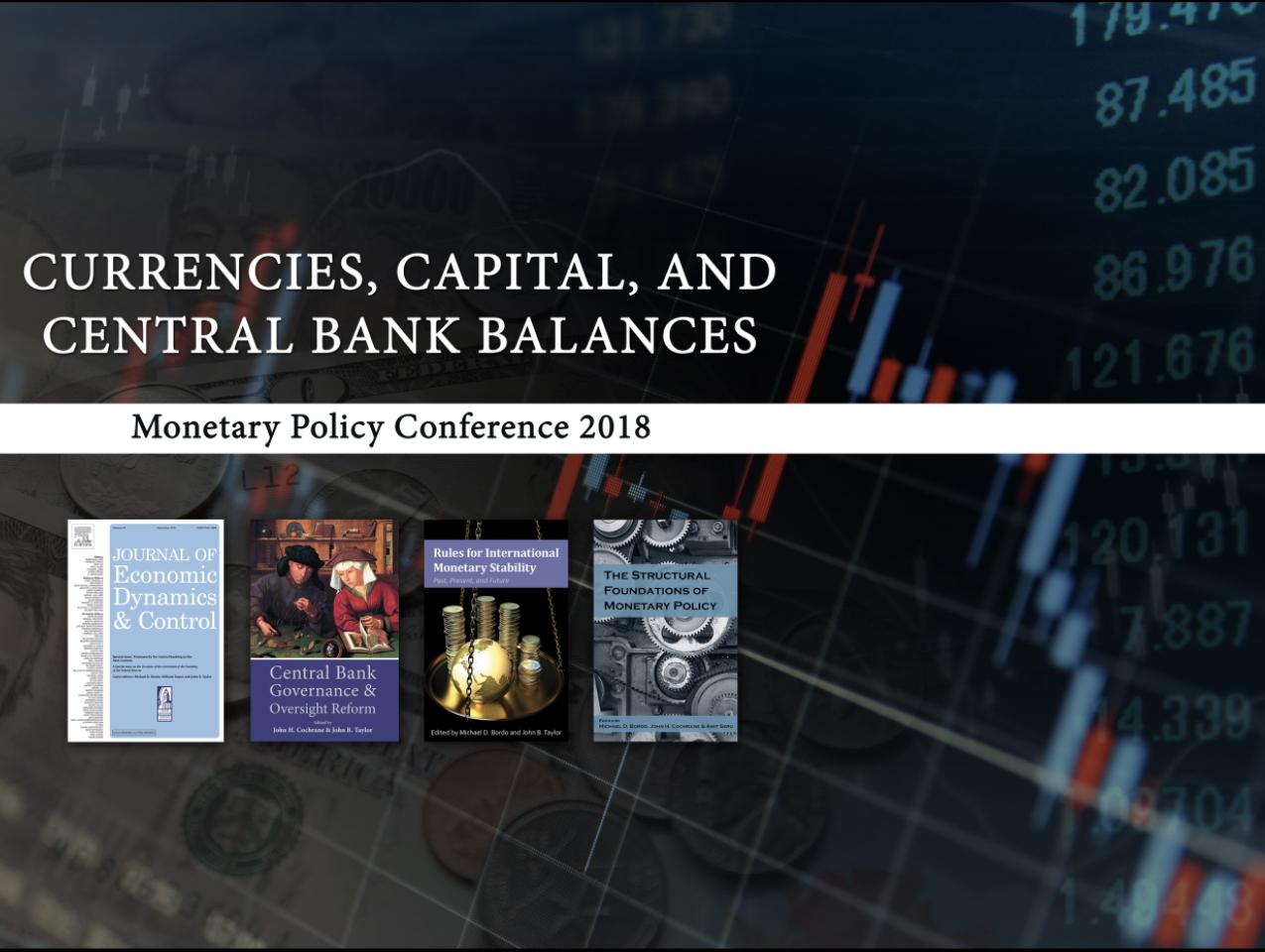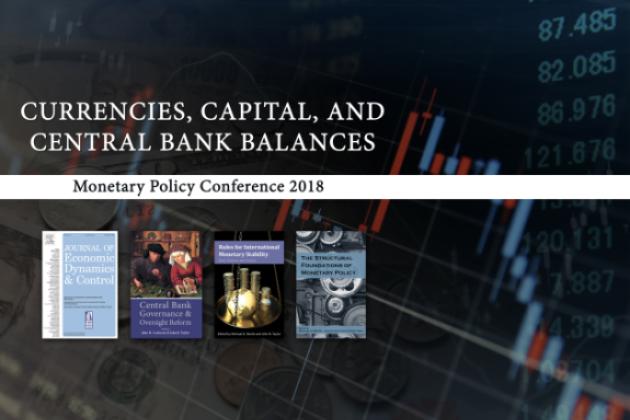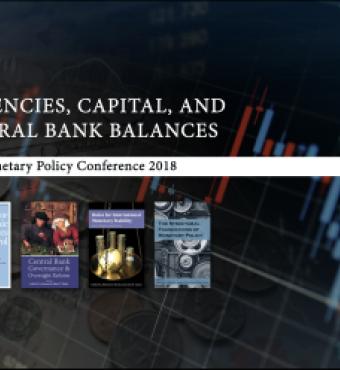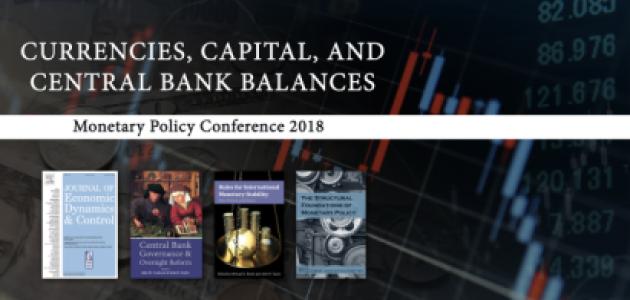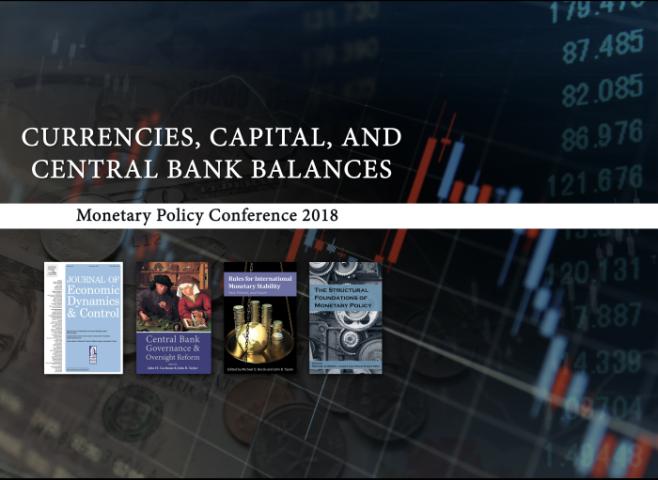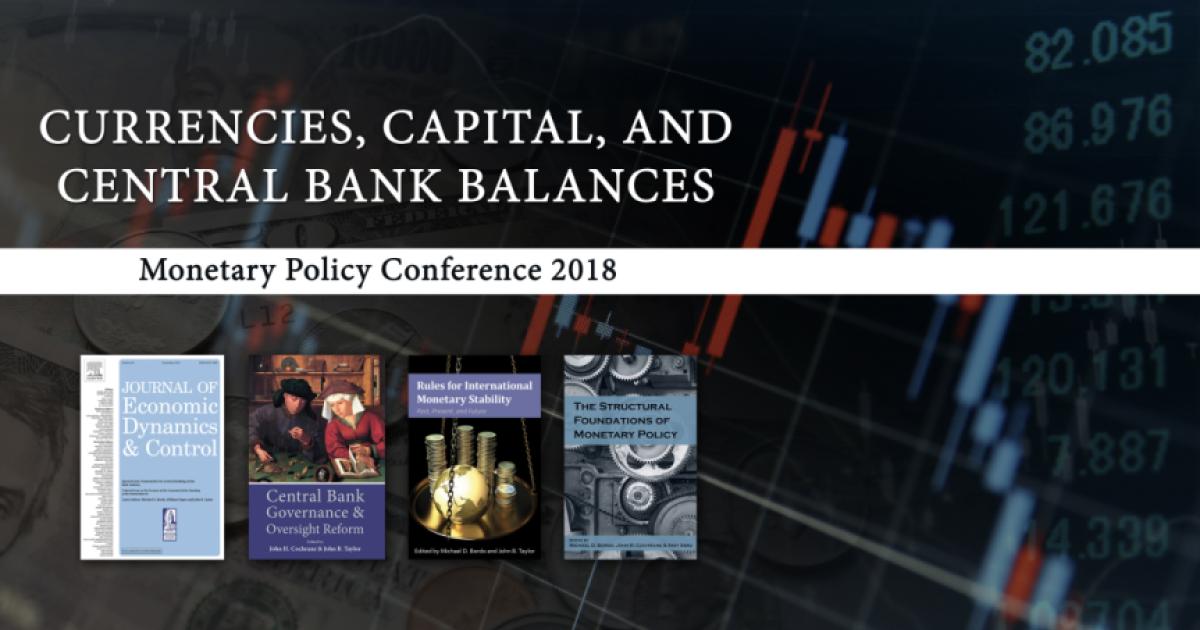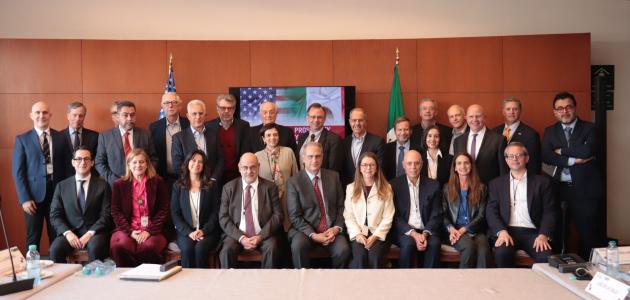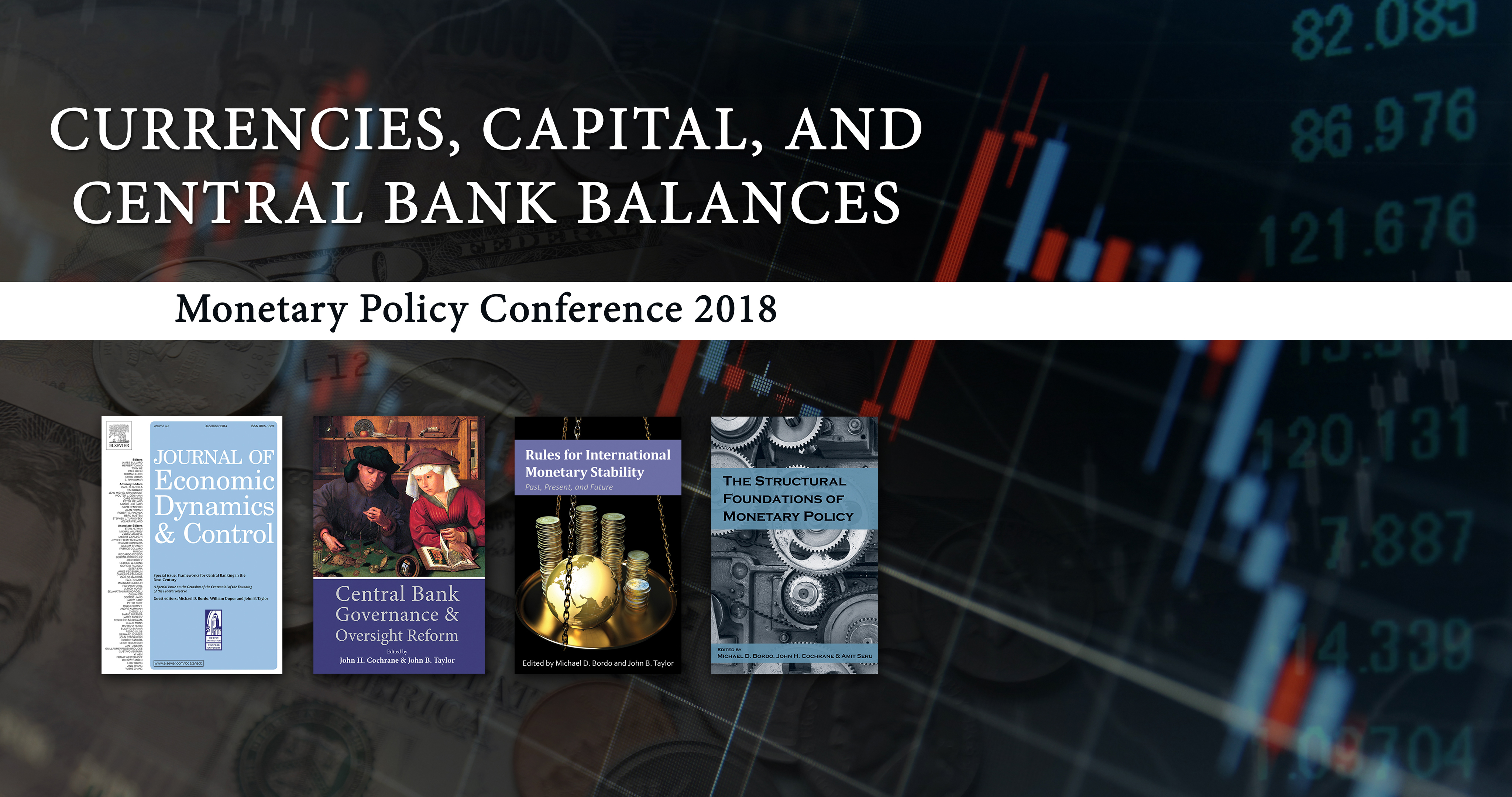
Economists and policy makers engaged in robust discussions on the Federal Reserve’s proper role in U.S. monetary policy at the Hoover Institution on May 4.
More than 125 people attended the fifth annual Monetary Policy Conference—titled “Currencies, Capital and Central Bank Balances – in the David and Joan Traitel Building’s Hauck Auditorium. Host and Hoover economist John Taylor described the proceedings as offering a “healthy debate” and alternative viewpoints on monetary policy that may not be found in other academic and think tank settings.
“Each year we’re noticing more and more interest in this conference. People are paying attention and listening to our discussions, so we’re having a positive effect bringing people together,” said Taylor, the George P. Shultz Senior Fellow in Economics.
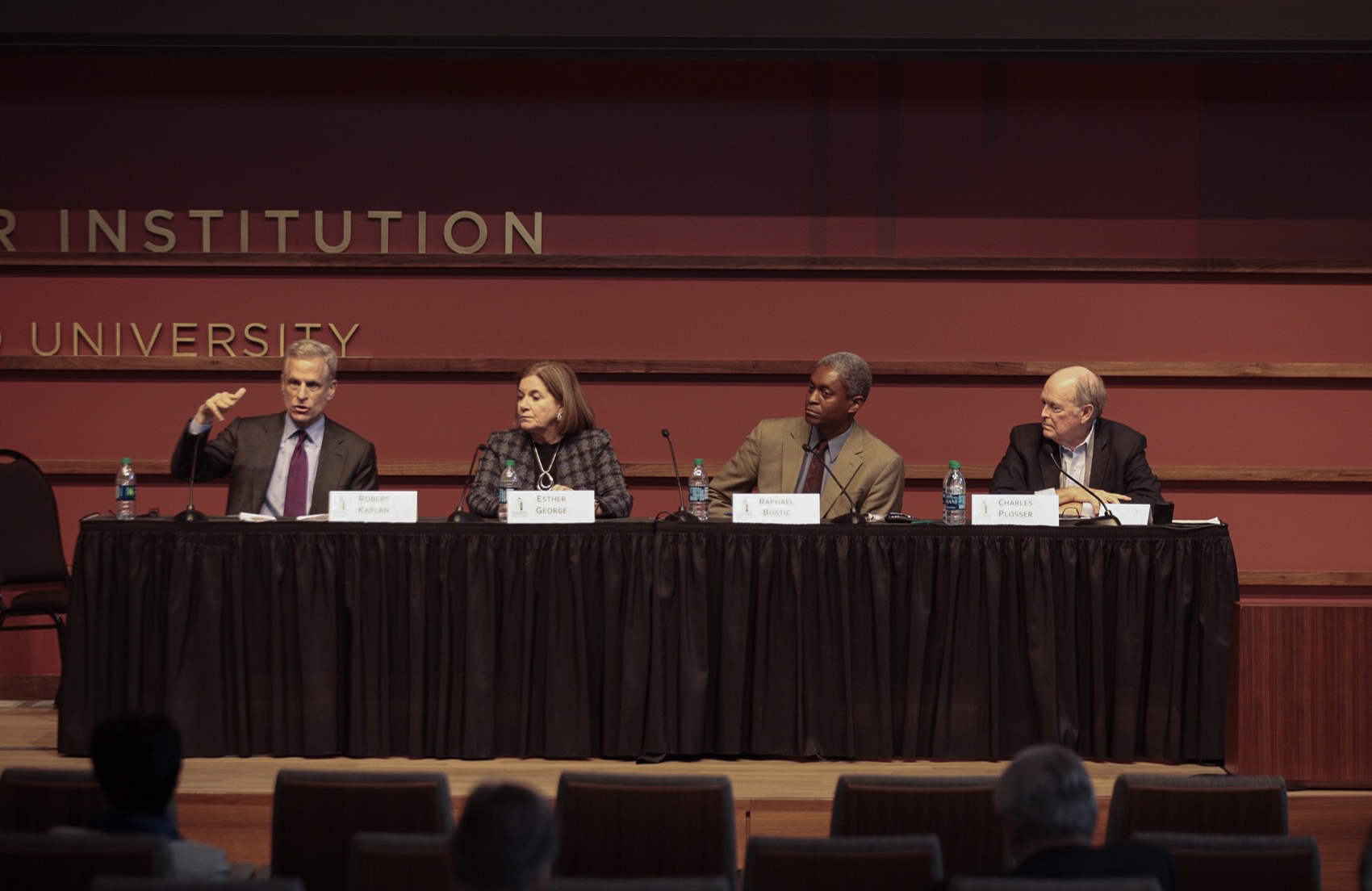
"Healthy Debate," Alternative Views
"Normalization” of the Federal Reserve was a main topic of the conference, Taylor pointed out. Normalization means taking the steps necessary to raise the federal funds rate and other short-term interest rates to more normal levels.
Taylor created the “Taylor Rule,” which states that the Fed’s nominal interest rate target should increase when inflation rises relative to its target, and the target nominal interest rate should decrease if unemployment rises relative to the unemployment rate consistent with full employment. The idea has proven highly influential on Wall Street, and in Federal Reserve boardrooms and central banks around the world.
The key issues discussed at this year’s conference were whether the central balance sheet should be reduced to a level where interest rates are market-determined. One concern is whether the Federal Reserve tries to arbitrarily manage interests rates – monetary policy – when it would be better to follow traditional rules and market directions. Generally-speaking, the Fed uses monetary policy to attempt to achieve its short-run goal of stabilizing the economy and its long-run goal aimed at controlling inflation.
Media, Speakers and Topics
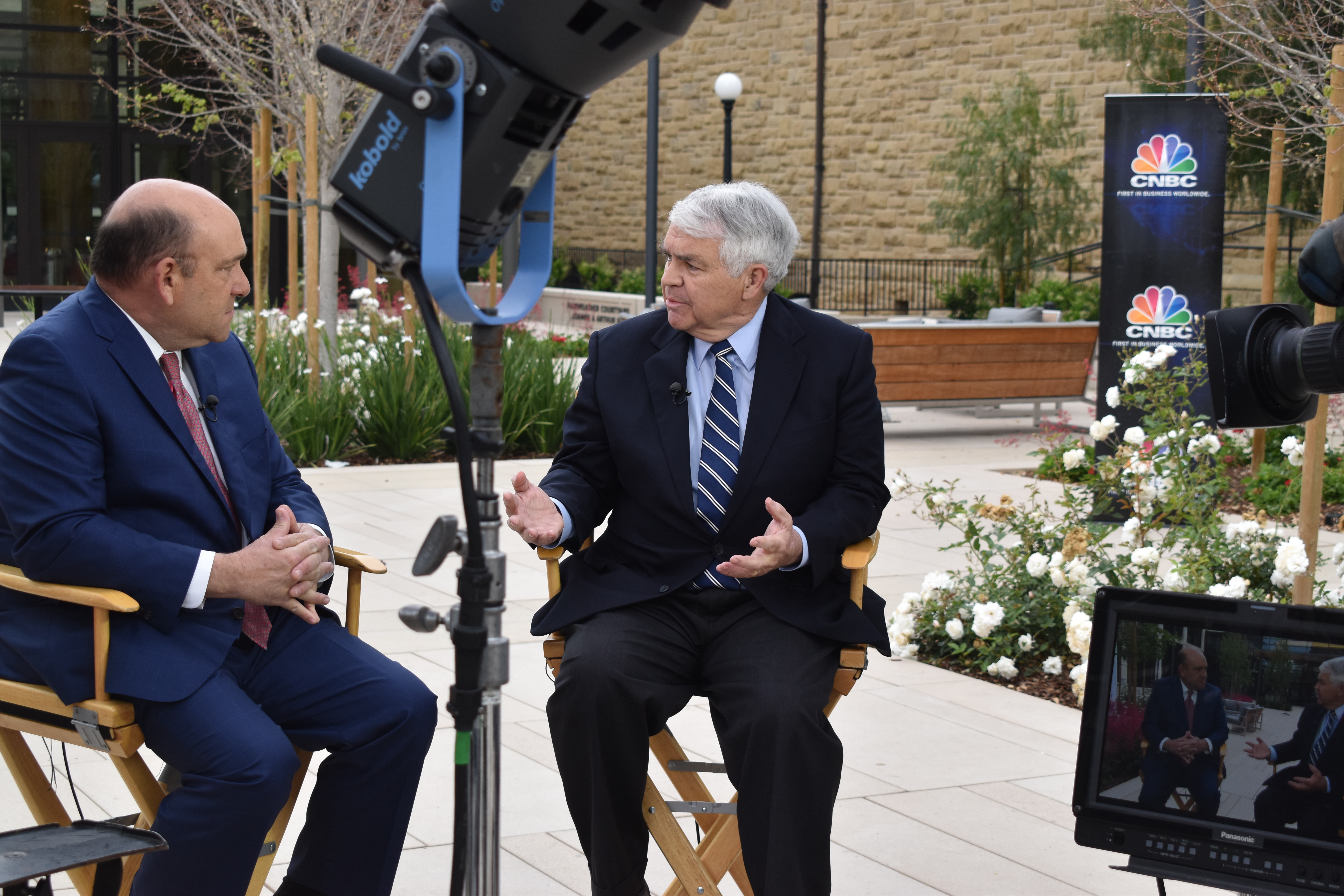
The Hoover conference drew interest from business and financial print and broadcast media, including CNN, the Wall Street Journal, the New York Times, the Los Angeles Times, Reuters, Bloomberg, CNBC, Politico, and Investor's Business Daily.
Presenters included John C. Williams, president of the Federal Reserve Bank of San Francisco; Randal Quarles, vice chair of the Federal Reserve Board; Raghu Rajan, former governor of the Reserve Bank of India; Gita Gopinath, Harvard University economist; Martin Schneider, Stanford economist; Lorie Logan of the Federal Reserve Bank of New York; Peter Fisher, a Dartmouth College professor; Mickey Levy, economist with Berenberg Capital Markets; William Nelson, economist with The Clearing House; and Volker Wieland, economist with Goethe University Frankfurt; among others.
Williams, the Fed chief in San Francisco, said the conference was a “healthy discussion” to have for all those involved, and a good way to challenge assumptions in monetary policy. While noting he was speaking for himself and not the Fed, Williams talked about the value of long-range planning in monetary policy.
He also explained how changes in the global landscape, demography, productivity and safe asset storage drive monetary policy issues. Price stability and strong employment are outcomes the Fed seeks, he said. The Fed has a two percent goal for the inflation rate.
Williams earned his doctorate in economics from Stanford, and Taylor was his dissertation adviser. Williams was a key research assistant to Taylor in the original 1992 paper introducing the Taylor Rule, and served on the Hoover Working Group on Economic Policy.
George P. Shultz, Thomas W. and Susan B. Ford Distinguished Fellow at Hoover, chaired a panel discussion on capital flows and the International Monetary Fund (IMF) with Taylor and economists from the IMF and UCLA.
Earlier, Shultz warned about how rising interest rates and increasing deficits threaten to push public debt spiraling upward. Also, in March, Shultz joined Taylor and Hoover senior fellows and economists John Cochrane, Michael Boskin and John Cogan to co-write an op-ed on this issue for the Washington Post.
Kevin Warsh, the Shepard Family Distinguished Visiting Fellow in Economics at Hoover, chaired a discussion on the future of the central bank’s balance sheet with four scholars and economists.
Three presidents of Federal Reserve branches—Raphael Bostic, Esther George, and Robert Kaplan—participated on other panels.
Other topics included the international rules of the monetary game; banking, trade, currency; payments, credit, asset prices; financial stability, regulations and the balance sheet; and monetary policy reform and macro model comparisons.
Draft papers and remarks by scholars across the country were presented and discussed. They included titles such as “Capital Flows, the IMF’s Institutional View, and Alternatives,” by John Taylor; “Rules of the Monetary Game,” by Prachi Mishra; “The Fed’s Balance Sheet: What Now?” by Mickey Levy; “Banking, Trade and the Making of Dominant Currency,” by Gita Gopinath and Jeremey Stein; “Get Up Off the Floor,” by Bill Nelson; and “Payments, Credit and Asset Prices,” by Monika Piazzesi and Martin Schneider.
On the subject of economic growth, Taylor said, “Growth is very important for people and their prosperity. We’ve had a very dismal recovery from the Great Recession. Other policies matter for growth, but monetary policy is important to keep the economy stable and inflation from getting too low or too high.”
John Taylor also writes the Economics One blog.
MEDIA CONTACT:
Clifton B. Parker, The Hoover Institution: 650-498-5204, cbparker@stanford.edu







